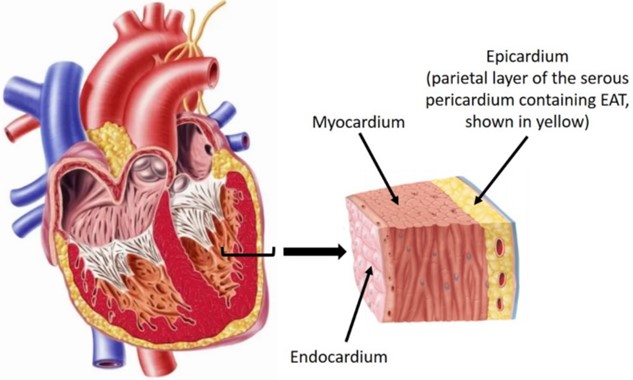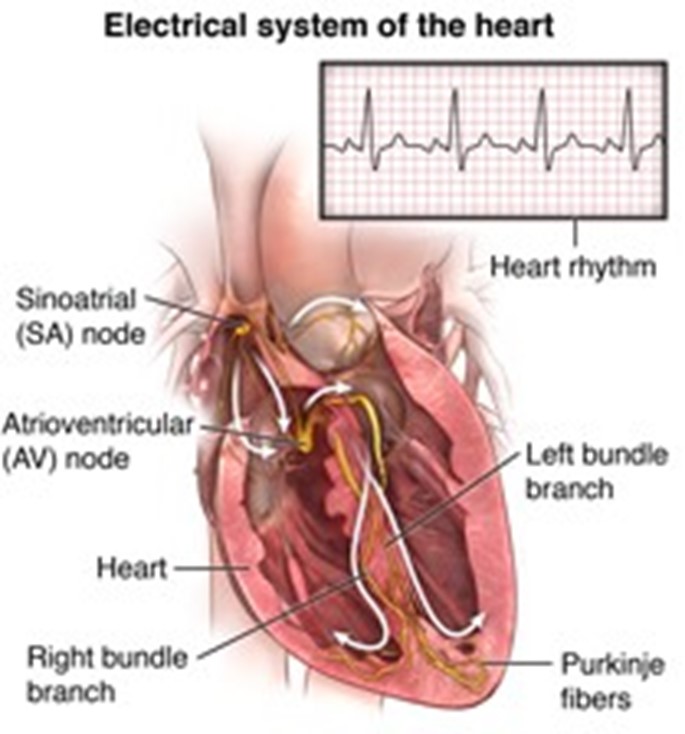The smooth, thin membrane that lines the chambers of the heart and forms the surface of the heart valves is the:
Pericardium.
Endocardium.
Myocardium.
Epicardium.
The Correct Answer is B

The endocardium is the thin inner lining of the heart chambers and also forms the surface of the heart valves.
Some possible explanations for the other choices are:
Choice A is wrong because the pericardium is the sac that surrounds the heart and consists of two layers: the fibrous pericardium and the serous pericardium.
Choice C is wrong because the myocardium is the thick middle layer of muscle that allows the heart chambers to contract and relax to pump blood to the body.
Choice D is wrong because epicardium is another name for the visceral layer of the serous pericardium that is fused to the heart and is part of the heart wall.
Nursing Test Bank
Naxlex Comprehensive Predictor Exams
Related Questions
Correct Answer is C
Explanation
The conversion of fibrinogen to fibrin by thrombin is the final step in the formation of a blood clot.
Fibrin is a protein that forms a net-like structure that traps platelets and other blood cells, making the clot stronger and more durable.
Choice A is wrong because the formation of a prothrombin activator is the first step in the formation of a blood clot.
A prothrombin activator is a complex of enzymes that converts prothrombin to thrombin.
Choice B is wrong because the conversion of prothrombin to thrombin by the prothrombin activator is the second step in the formation of a blood clot.
Thrombin is an enzyme that converts fibrinogen to fibrin.
Choice D is wrong because tissue damage is not a step in the formation of a blood clot, but a trigger for the clotting process.
When blood vessels are injured, they release substances that activate platelets and clotting factors.
Correct Answer is C
Explanation

The sinoatrial (SA) node is the natural pacemaker of the heart.
It generates electrical impulses that cause the heart’s chambers to contract, setting the heart rate.
The SA node typically generates 60–100 heartbeats per minute when a person is at rest.
Choice A is wrong because Purkinje fibers are part of the electrical conduction system of the heart that carries impulses to the ventricles.
They are not the primary source of impulses.
Choice B is wrong because the AV bundle (also called bundle of His) is another part of the electrical conduction system of the heart that connects the atria and the ventricles.
It is not the natural pacemaker of the heart.
Choice D is wrong because an atrioventricular node is a relay station between the atria and the ventricles that delays the electrical impulses from the SA node.
It can act as a backup pacemaker if the SA node fails, but it is not the normal pacemaker of the heart.
Whether you are a student looking to ace your exams or a practicing nurse seeking to enhance your expertise , our nursing education contents will empower you with the confidence and competence to make a difference in the lives of patients and become a respected leader in the healthcare field.
Visit Naxlex, invest in your future and unlock endless possibilities with our unparalleled nursing education contents today
Report Wrong Answer on the Current Question
Do you disagree with the answer? If yes, what is your expected answer? Explain.
Kindly be descriptive with the issue you are facing.
